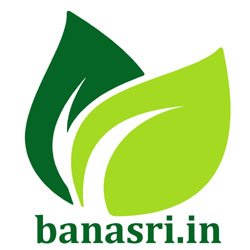
Victorian and Art Deco Ensemble of Mumbai: Architectural Heritage on India’s Western Seaboard – A World Heritage Site
The Victorian and Art Deco Ensemble of Mumbai, inscribed as a UNESCO World Heritage Site in 2018, showcases the architectural legacy of Mumbai (formerly Bombay), India’s financial capital and largest city. This ensemble comprises two distinct architectural styles—Victorian Gothic Revival and Art Deco—that flourished during the 19th and early 20th centuries. These architectural styles reflect Mumbai’s cosmopolitan character and historical development under British colonial rule and later as a thriving modern metropolis.
Historical Background
- Colonial Influence
- Mumbai served as a key trading hub and administrative center during British rule.
- Victorian Gothic Revival architecture was introduced in the mid-19th century, reflecting British imperial aspirations and local adaptation.
- Emergence of Art Deco
- Art Deco emerged globally in the early 20th century, characterized by geometric patterns, streamlined forms, and modern materials.
- Mumbai’s Art Deco buildings flourished in the interwar period, symbolizing progress and modernity.
Architectural Styles
- Victorian Gothic Revival
- Characterized by pointed arches, spires, intricate carvings, and stained glass windows.
- Examples include the Bombay High Court, Chhatrapati Shivaji Maharaj Terminus (formerly Victoria Terminus), and University of Mumbai.
- Art Deco
- Features include smooth surfaces, geometric shapes, bold colors, and decorative motifs.
- Notable buildings include residential apartments along Marine Drive (Queen’s Necklace), Eros Cinema, and Regal Cinema.
Specialty of the Victorian and Art Deco Ensemble
- Architectural Diversity
- Represents the transition from Victorian Gothic Revival to Art Deco styles.
- Reflects Mumbai’s evolution from colonial port city to modern metropolis.
- Cultural Significance
- Symbolizes Mumbai’s economic prosperity, cultural diversity, and architectural innovation.
- Highlights the integration of global architectural trends with local materials and craftsmanship.
Tourism Aspects
- Visitor Experience
- Walking tours available to explore the ensemble and learn about its historical and architectural significance.
- Heritage walks and guided tours conducted by local experts and historians.
- Interpretive centers and exhibitions offering insights into Mumbai’s architectural heritage.
- Nearby Attractions
- Gateway of India: Iconic monument overlooking the Arabian Sea, built to commemorate the visit of King George V and Queen Mary.
- Elephanta Caves: UNESCO World Heritage Site accessible by ferry from Mumbai, showcasing ancient rock-cut temples and sculptures.
- Marine Drive: Popular promenade offering stunning views of the city skyline and Arabian Sea.
- Events and Festivals
- Kala Ghoda Arts Festival: Annual cultural festival celebrating arts, literature, and music in Mumbai.
- Mumbai International Film Festival: Showcases contemporary cinema and attracts filmmakers and enthusiasts from around the world.
Impact on Locality
- Economic Significance
- Boosts tourism and local economy through visitor spending, hospitality services, and cultural events.
- Supports local artisans and businesses involved in restoration and preservation efforts.
- Cultural Influence
- Enhances Mumbai’s global reputation as a cultural and architectural destination.
- Promotes awareness of historical preservation and urban conservation practices.
Preservation and Challenges
- Conservation Efforts
- Managed by the Municipal Corporation of Greater Mumbai and heritage conservation organizations.
- Ongoing restoration and maintenance to preserve the architectural integrity and historical authenticity of the buildings.
- Challenges
- Balancing tourism with conservation needs to ensure sustainable development.
- Addressing urban pressures, pollution, and modernization without compromising architectural heritage.
Conclusion
The Victorian and Art Deco Ensemble of Mumbai stands as a testament to the city’s architectural diversity, historical evolution, and cultural vibrancy. As a UNESCO World Heritage Site, it attracts visitors and enthusiasts from around the world, offering a journey through Mumbai’s colonial past and modern aspirations. The ongoing efforts to preserve and promote this ensemble ensure that it continues to inspire admiration and appreciation for its architectural splendor and historical significance for generations to come.
